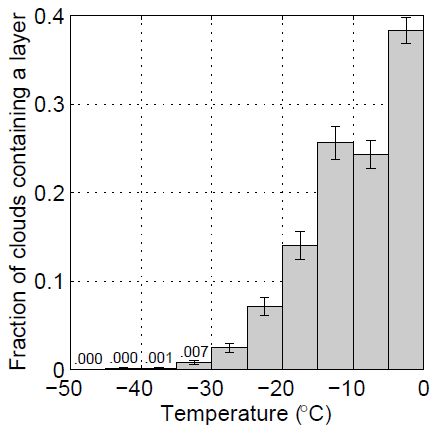Icing occurs when supercooled water freezes at impact with airplane´s surface. The freezing process is possible when there is supercooled water present in temperatures 0ºC ... -40ºC. In practice, there is no significant icing in clouds with the top temperature below -15ºC. Most common (and severe) cases of icing occurs in temperatures 0ºC ... -12ºC.
The amount or percentage of supercooled water within clouds is hard to measure. At mid-levels an estimate has been made combining radar and lidar measurements. This gives a rough picture of the occurrence of icing depending on temperature. The real values may be greater, because this method cannot take into account fronts and possible multiple icing layers. An aircraft measurement has shown that there might be as many as four separate icing layers on top of each other.
Fig. 2.1. Fraction of clouds (between 0 and 1) containing highly reflective layers (indication of liquid water) as a function of cloud temperature/K. Data collected by lidar (www.met.reading.ac.uk/).
